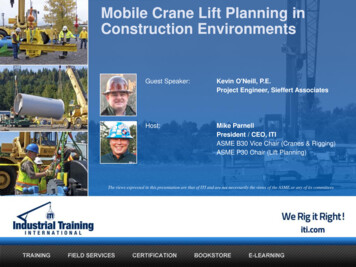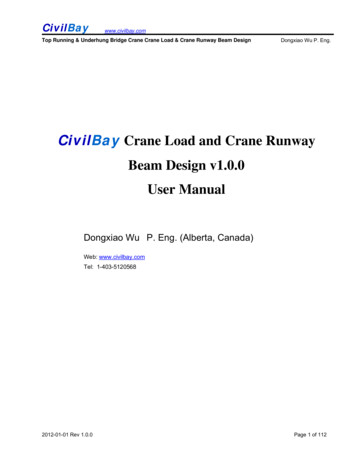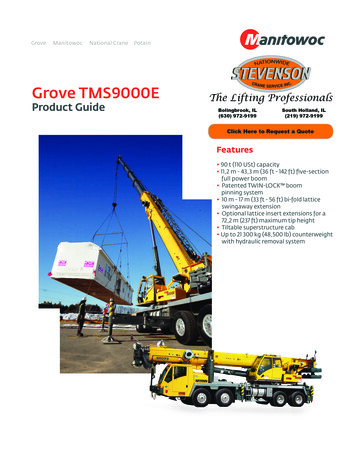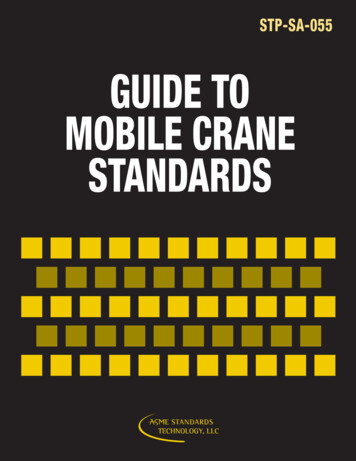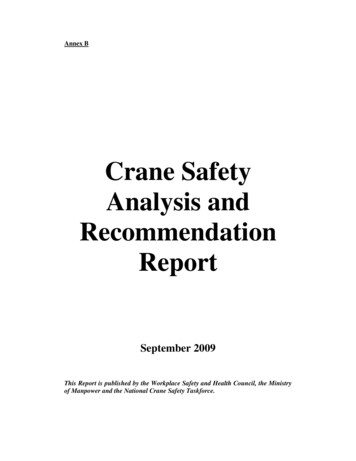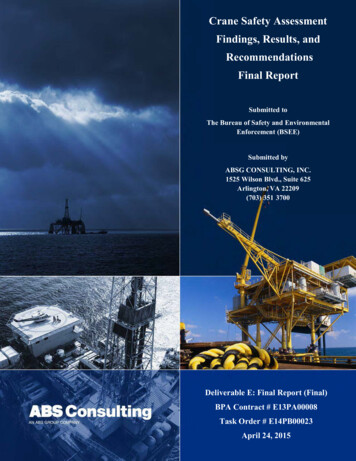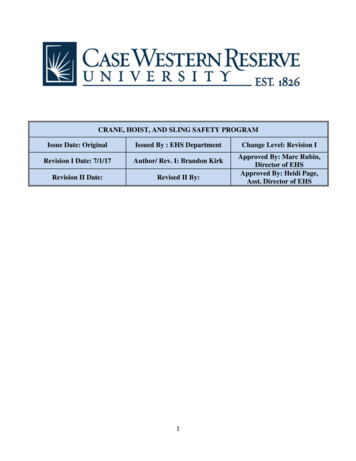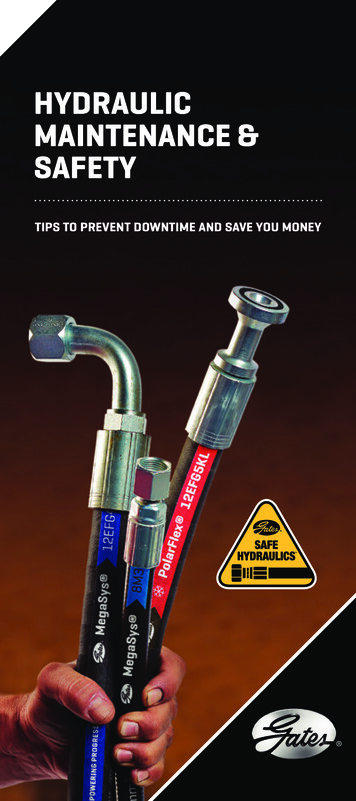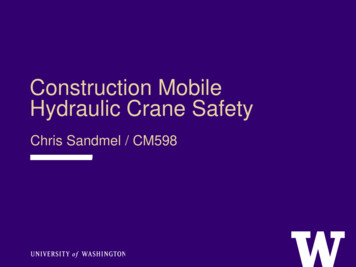
Transcription
Construction MobileHydraulic Crane SafetyChris Sandmel / CM598
ISSUE – Why care? 323 construction cranerelated deaths ‘92-06 For 32%, cause ofdeath electrocution 71% involved mobile,not tower cranes New OSHA standards,fully effective 2014
SITUATION – Deaths, Root Cause32%21%18%7%7%6%Overhead power line electrocutionsCrane collapsesStruck by crane booms/jibsStruck by crane loadsCaught in/betweenStruck by cranesNotice a trend?
SITUATION – Additional Background 1/3 fatalities involved sub-KTRs having 10 employees Death of laborers were most common trade (30%),followed by supervisors/administrators (12%),ironworkers (6%), and mechanics (5%) Leading states and # deaths:TX (42), FL (27), CA (25), LA (17)Of these states, only CA requiredoperator license prior to 2010.
ANALYSIS – Elimination Controls To prevent electrocution, de-energize the line Do not perform work with high winds or lightning Other situations—is the lift even necessary?
ANALYSIS – Substitution Controls Avoid critical lifts (OSHA definition) Greater than 75% rated capacity Multiple crane lifts
ANALYSIS – Engineering Controls Load Moment Indicator (LMI) Boom Angle Boom Extension Weight and % of safe WLL Anti-Two Block Device (A2B) Rollover Protection System (ROPS)
ANALYSIS – Administrative Controls Crane certification Annual load test @ 105% rated capacity Detailed maintenance and inspection records Sign-off by certifying official Operator licensing / certification Accredited crane operator testing organizationAudited employer qualification programU.S. militaryLicensing by state or local government Qualified crane signal person & riggers Communication SOPs w/ crane operator Standardized hand signal use
ANALYSIS – Administrative Controls (cont.) Audit of Crane Program Rigging Gear Inspection Effective June 8, 2011, all slings, chain, synthetic & wire rope,are required to have identification tags/labels permanentlyattached if sold and used in the U.S. All gear should be marked with manufacturer and WLL Only use equipment intended for overhead use
CASE STUDIES Elimination Control Example—MCAS Iwakuni Harbor Engineering Control Example—Guam NCC Audit Administrative Control Example—USMC Ball Rigging
CONCLUSION Crane operations are a significant source ofelectrocution and struck-by deaths Latest OSHA and RCW standards require operatorand crane certification; proven administrative control. GC can be held responsible for all crane safety onsite, whether owned, rented, or sub-KTR operated. Maintain a robust and well documented program.
electrocution and struck-by deaths Latest OSHA and RCW standards require operator and crane certification; proven administrative control. GC can be held responsible for all crane safety on site, whether owned, rented, or sub-KTR
